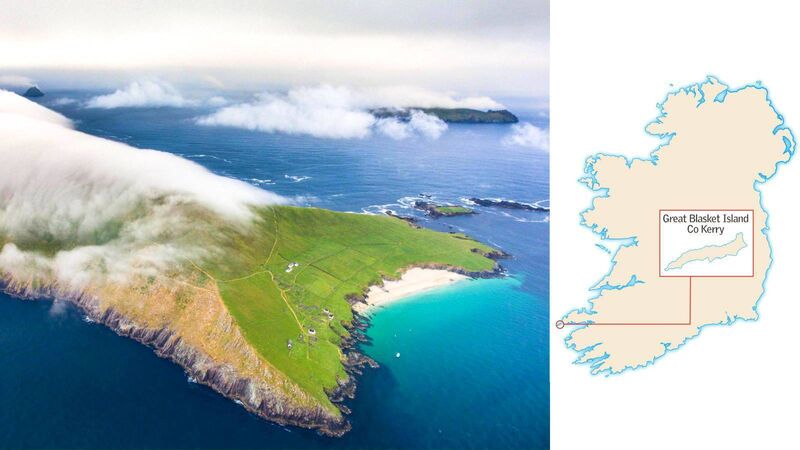Islands of Ireland: The Kerry island the gods would be happy to call home

Great Blasket Island: the Great Blasket Island name or An Blascaod Mór name is thought to derive from Norse influence, possibly meaning ‘sharp rock’. It was also called Ferriter's Island
To walk barefoot along the spine of this island on a summer’s day allowing your feet sink into the soft clover and grass is a special pleasure. Walking high on the spine of this seeming sleeping animal with unsurpassed vistas is a truly transcendent experience. Well below its summit of 346 metres, are the ruins of the settlement where the population peaked at near 200 in the late 19th century. The island was abandoned in 1953.
No-one lives there now except for two caretakers from April to October at the coffee shop and accommodation service chosen from a global lottery to come and live in a place where the gods would be happy to call home.
Near the ruins is the landing point for boats from the mainland. And while many visitors make the journey larger boats need to disgorge their passengers into RIBs to land on the island. In September, there is a magnificent sight of hundreds of grey seals hauling themselves out of the sea on Trá Bán and reaching a peak of more than 500 on occasion.
The Great Blasket Island points like an accusing finger for 6.5km into the Atlantic at the end of the Dingle Peninsula and is the largest of six (traditionally) islands in the archipelago: Inishtooskert to the north is nicknamed the Sleeping Man; Beginish to the east is very small; Inishnabro with its cathedral-like cliffs, and Charlie Haughey’s island Inishvickillane, lie to the southwest; and Inish Tearaght with its lighthouse, is Ireland’s most westerly point. There are actually four other Blasket islands, all satellites of the Great Blasket: Illaunbaun; Illaunboy; Illauncanknock; and Young’s Island.
First week as Island caretakers! Looking forward to meeting you all 😊☀️ pic.twitter.com/6W2RqWt33b
— Great Blasket Island (@gbisland) April 8, 2024
The genesis of the Great Blasket Island name or An Blascaod Mór name is thought to derive from Norse influence, possibly meaning ‘sharp rock’. It was also called Ferriter's Island.
Peter Somerville Large gives a vivid account of life on the Great Blasket in the 19th and 20th centuries with supplies and post coming over from the mainland in the black-tarred naomhóga. Smaller boats were used for lobster fishing with the catch selling in Dingle for nine shillings a dozen. The islanders manured the soil with seaweed which produced plentiful supplies of potatoes. Domestic fowl as well as puffins and other birds’ eggs, fish, and rabbit supplemented the diet. The women provided homespun clothing from wool. There was also a school.
The island became something of a laboratory as a last remnant of a Gaelic culture with a thriving Irish-language and vibrant tradition of storytelling and song. Robin Flower was the leading anthropologist who befriended many of the islanders.
The island will be forever associated with its rich literary heritage. First, the scourge of generations of students of Irish, Péig Sayers (but worth revisiting as an adult). In a remarkable achievement, three other Great Blasket writers achieved renown: Tomás Ó Criomhthain for , and Muiris Ó Súilleabháin for , and Eilís Ní Shuilleabháin for . These writers were fostered to some extent by visiting anthropologists and writers, particularly Flower, who recognised the unique way of life on the Great Blasket.
And of course life on the island had its hardships. Péig’s son fell from the cliffs into the sea and died. Later she would write: “How lonely I am on this island in the ocean. I think this is a very confined place with the sea put there to terrorise me. There’s a great deal of pleasantry and hardship in the life of a person who lives on an island like this.”
The only comparable islands to achieve artistic renown were for painting: the modernism of Achill, County Mayo, and the primitive school of Tory, County Donegal.
Though the islanders are dead and gone, the Great Blasket Island will always find a new audience through its writers. Ó Criomhthain wrote in The Islandman “the like of us will never be again”. How right he was.
dingleboattours.com/tours/blasket-island/ferry
: logainm.ie; , Gerald Hayes, The Collins Press; Peter Somerville Large, , Gill and MacMillan; blasket.ie







